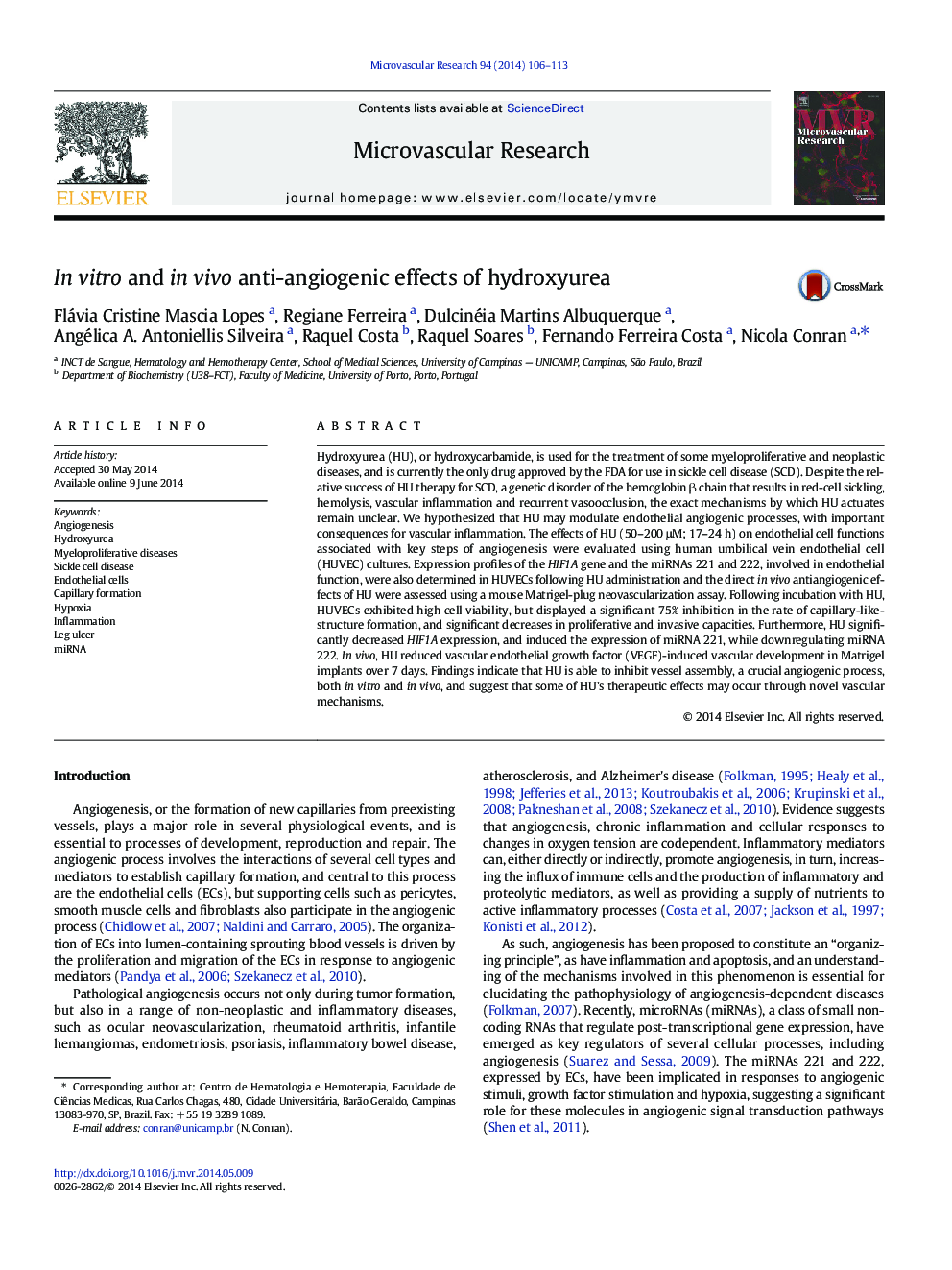| کد مقاله | کد نشریه | سال انتشار | مقاله انگلیسی | نسخه تمام متن |
|---|---|---|---|---|
| 1994781 | 1541290 | 2014 | 8 صفحه PDF | دانلود رایگان |

• Hydroxyurea (HU) constitutes the only FDA-approved therapy for sickle cell disease.
• In vitro, HU inhibited key steps of endothelial angiogenic processes.
• HU decreased HIF1A and altered miRNA 221/222 expression in endothelial cultures.
• In vivo, HU inhibited VEGF-induced vascular development in Matrigel implants.
• Some of HU's therapeutic effects may occur through novel vascular mechanisms.
Hydroxyurea (HU), or hydroxycarbamide, is used for the treatment of some myeloproliferative and neoplastic diseases, and is currently the only drug approved by the FDA for use in sickle cell disease (SCD). Despite the relative success of HU therapy for SCD, a genetic disorder of the hemoglobin β chain that results in red-cell sickling, hemolysis, vascular inflammation and recurrent vasoocclusion, the exact mechanisms by which HU actuates remain unclear. We hypothesized that HU may modulate endothelial angiogenic processes, with important consequences for vascular inflammation. The effects of HU (50–200 μM; 17–24 h) on endothelial cell functions associated with key steps of angiogenesis were evaluated using human umbilical vein endothelial cell (HUVEC) cultures. Expression profiles of the HIF1A gene and the miRNAs 221 and 222, involved in endothelial function, were also determined in HUVECs following HU administration and the direct in vivo antiangiogenic effects of HU were assessed using a mouse Matrigel-plug neovascularization assay. Following incubation with HU, HUVECs exhibited high cell viability, but displayed a significant 75% inhibition in the rate of capillary-like-structure formation, and significant decreases in proliferative and invasive capacities. Furthermore, HU significantly decreased HIF1A expression, and induced the expression of miRNA 221, while downregulating miRNA 222. In vivo, HU reduced vascular endothelial growth factor (VEGF)-induced vascular development in Matrigel implants over 7 days. Findings indicate that HU is able to inhibit vessel assembly, a crucial angiogenic process, both in vitro and in vivo, and suggest that some of HU's therapeutic effects may occur through novel vascular mechanisms.
Journal: Microvascular Research - Volume 94, July 2014, Pages 106–113